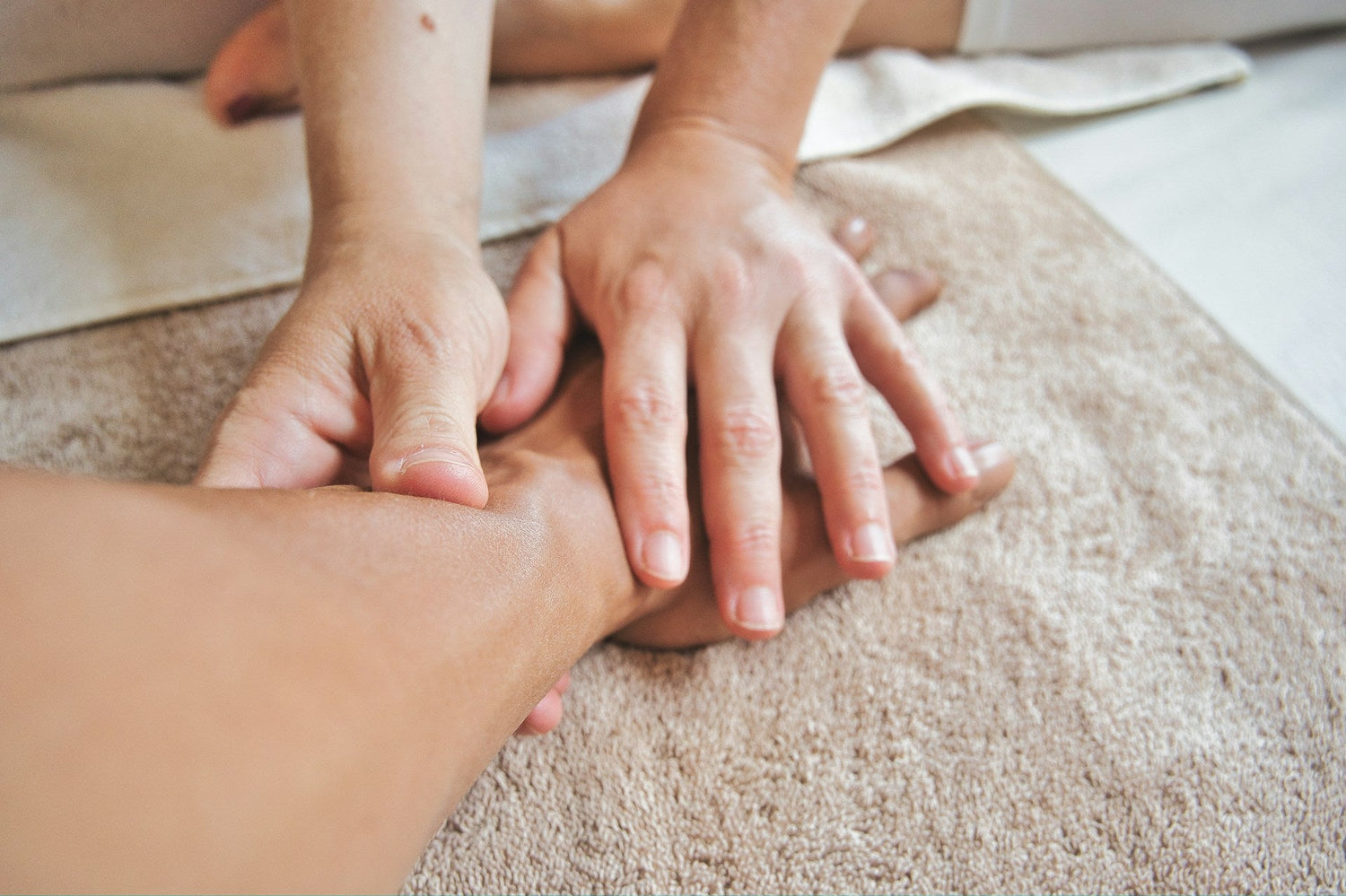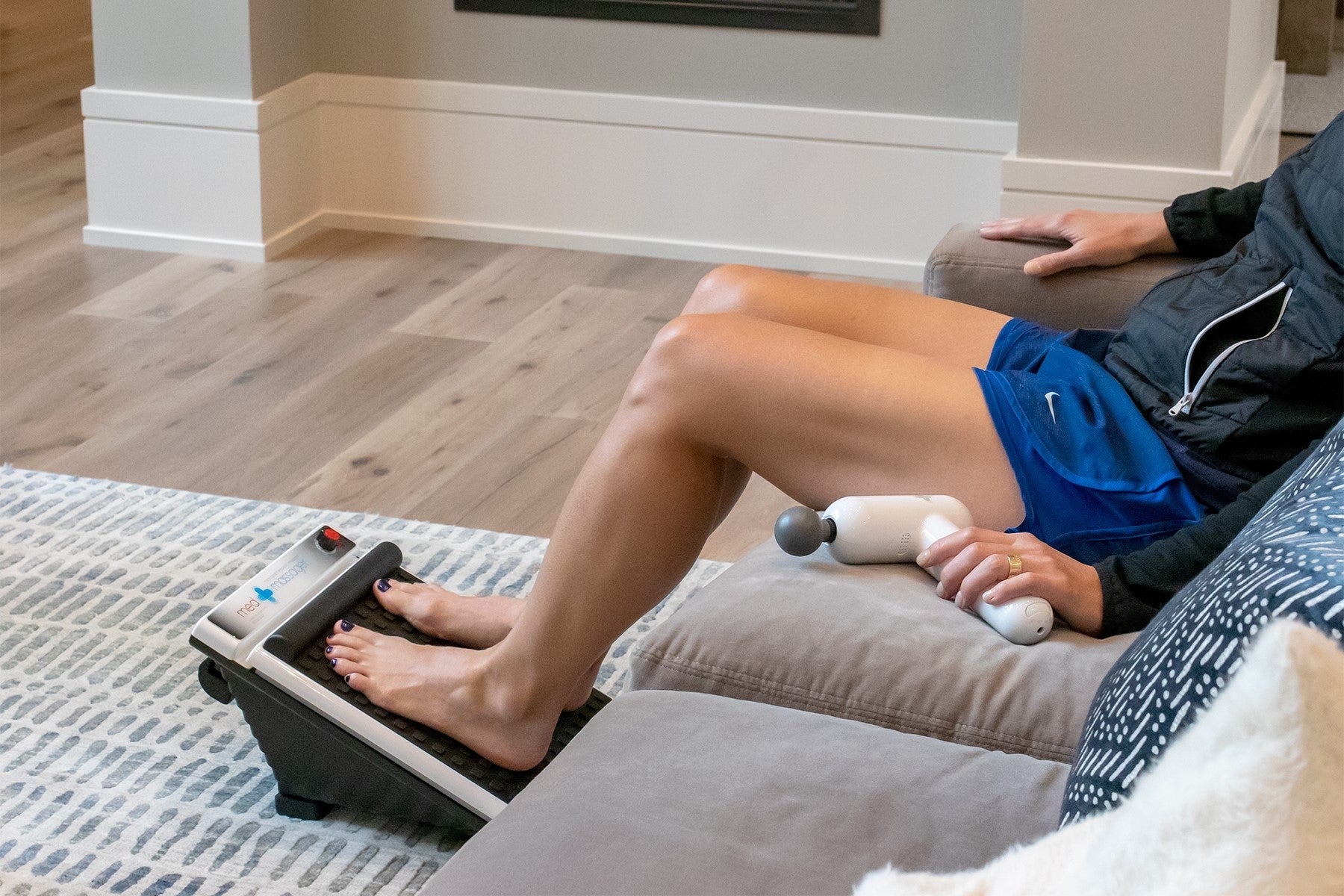Does your daily routine involve a lot of hands-on work? If so, you might know how frustrating it is to deal with the tingling, numbness, and pain of carpal tunnel syndrome (CTS).
A whopping 4 to 10 million Americans deal with the discomfort of CTS each year. And if you’ve been diagnosed with this condition, chances are you’ve talked with your doctor about the best ways to keep your symptoms at bay. But did you know that certain natural remedies could also bring you some relief?
Read on to explore seven natural remedies for carpal tunnel syndrome, along with a few safety tips to keep in mind before you start.
Understanding Carpal Tunnel Syndrome
So, what exactly is carpal tunnel syndrome? This condition occurs when your median nerve (which travels from the armpit through the arm, wrist, and hand) becomes entrapped or compressed in the passageway in your wrist.
This passageway is called the carpal tunnel, and it’s also home to nine tendons that connect to your fingers.
In this space, there are a lot of moving parts — meaning carpal tunnel syndrome can arise from a wide variety of causes. For example, if your finger tendons become inflamed or swollen after repetitive tasks, the nerve can start to be “squeezed” in the carpal tunnel. In turn, this can lead to the numbness, pain, and other symptoms that come with nerve compression.
Beyond that, joint damage from arthritis, wrist injuries, and just about anything else that affects the carpal tunnel space can bring on symptoms.
Who Gets Carpal Tunnel Syndrome?
CTS can affect anyone, but here are some factors that may make you more prone to it:
- Trauma, injury, and repetitive strain in the wrist
- Any conditions affecting the nerves and joints – like arthritis, diabetes, and metabolic disorders
- Extra fluid retention in the body, such as during pregnancy
- Being female. Women are three times more likely to get CTS than men.
- Using vibrating tools at work, like jackhammers or drills
- Becoming older. Carpal tunnel frequently impacts people 40 to 60, and your chances of experiencing it may increase with age.
How Is Carpal Tunnel Syndrome Diagnosed?
Simply explaining your symptoms to your doctor is the first step in identifying whether or not you have carpal tunnel syndrome. From there, they may conduct a few physical tests to check the way your hands and fingers are functioning.
If need be, your doctor may also suggest an ultrasound, electromyography test, or nerve conduction study. These tools allow them to take a deeper look at your median nerve and learn more about what’s happening inside your wrist.
7 Natural Remedies for Carpal Tunnel Syndrome Relief
If you’ve ever had CTS, you know that coping with the numbness, burning, and pain in your hands can be a challenge. Fortunately, there are many natural remedies that could bring relief.
Here are seven helpful options worth trying:
Note: To protect your wrist and hand health, be sure to get the green light from your doctor before getting started with any exercises, stretches, or massage techniques.
1. Support Your Wrist with Lifestyle Adjustments
The easiest and most natural way to find carpal tunnel syndrome relief? Simply make adjustments to your daily routine.
These adjustments can look different for everyone — especially since each case of CTS has unique causes and triggers. With that in mind, here are a few basic changes that may help to soothe your symptoms:
- Explore ways to make your workflow more wrist-friendly. If possible, check if you can reduce or break up the hand-focused activities you do at work. And if you’re a desk worker, it can help to adjust your keyboard and mouse height.
- Stay mindful of your wrist positioning during certain tasks. Avoid straining the wrist while you’re texting, typing, or otherwise working with your hands. And when you can, try to keep your wrists in a neutral position.
- Take a break. It might seem like a no-brainer, but cutting back on the tasks that trigger your symptoms can make a world of difference in CTS. This might mean easing up on lifting weights, knitting, or using tools that stress the wrists.
2. Give Massage Therapy a Try

Massage therapy is a natural, touch-based tool that can help melt away discomfort in the arms, wrists, and hands.
Of course, it won’t be able to cure the root cause of inflammation in the wrist passageway. But for some people, it certainly can bring a dose of relief. In fact, a 2013 trial found that massage with trigger point therapy made a positive difference in the comfort and function of participants with CTS.
With these benefits in mind, here are two easy ways to try massage for carpal tunnel syndrome:
(Note: When massaging, always pay attention to your body’s signals, and avoid any pressure that feels painful.)
Simple Hand and Arm Massage
This gentle-pressure technique can bring a boost of blood flow and comfort to achy hands and wrists. Here are the steps:
- Start by massaging the pad of the thumb on your affected hand. Use your opposite thumb to rub in circular motions for 20 to 30 seconds.
- Slowly massage your way up through the palm, using upward motions to knead the soft tissue for 10 to 20 seconds more.
- Flip your hand over, and gently glide your thumb over the top of the hand. Pay careful attention to the areas between the bones.
- Then, gently knead the forearm. Use moderate pressure to glide along the tissue between the bones near the wrist (but not directly on the wrist).
- Repeat for 3 to 5 minutes, or as long as it feels good to you.
Use an Oscillating Massager
If you’re looking to make massage a part of your daily routine, an electric massager may be worth investing in. The MedMassager Body Massager Classic is a great option for wrist and hand relief — but you can use any high-quality tool with a soft, flat, oscillating surface.
Here’s how to use one for CTS:
- Start the device on a low, gentle setting.
- Rest the underside of your arm on the vibrating surface for 1 to 2 minutes. This can help alleviate tension in the wrist flexor muscles — aka the ones that help you bend your wrist forward.
- Increase the pressure to whatever level feels best to you. Then, continue to allow the device to massage for a few more minutes.
- Feel free to rest different arm and hand muscles on the massage surface to bring targeted relief where you need it most.
- Repeat for 5 to 10 minutes, up to a few times per day.
3. Stretching and Strengthening Exercises
If you’ve been seeking natural remedies for carpal tunnel syndrome relief, chances are you’ve seen people recommend stretches and strengthening exercises. But what makes this remedy so popular?
For many, the right exercises can target and break up tension in the wrist region. And ultimately, this can help to ease symptoms.
Still, wrist exercises tend to work best when paired with other lifestyle changes — and they’re not always suitable for everyone. For this reason, be sure to get the OK from your healthcare team before getting started.
Once you’re ready, here are some of the best options to try:
Wrist Flexor Stretch
This stretch offers an easy way to loosen up busy, tired wrist flexor muscles. Simply:
- Extend your affected arm out in front of you, with your palm up to the sky.
- Use your opposite hand to pull back on your fingers until you feel a stretch in the flexor area (the underside of your forearm).
- Hold for 10 to 20 seconds, and repeat up to 3 times.
Anterior Pathway Stretch
The anterior pathway stretch is another gentle exercise that targets the entire length of the inner arm. To do it:
- Stand sideways about an arm’s length away from a wall, with your affected arm facing the wall.
- Straighten your arm out to the side. Place your palm flat on the wall with your fingers pointing out behind you. At this time, feel free to adjust and ensure your arm is completely straight.
- With your hand locked in place, take 1 to 2 steps forward until you feel a relaxing stretch in the arm. (Check out this video to see what this stretch looks like in action.)
Tendon Glides
As mentioned above, your carpal tunnel is home to nine tendons that connect to your hand.
Tendon glides are an easy exercise that can help you boost the mobility and flow of these tendons — and they’re done using just a few simple hand movements.
Here are the steps:
- Hold your hand out in front of you and extend all of your fingers outward – like you’re signaling “stop.”
- Then, curl your pinky, middle, ring, and index finger inward. Keep your thumb pointing out to the side.
- Extend your fingers again. Then, curl your hand into a fist.
- Extend your fingers upward once more. Then, bend them forward so that your hand is in an “L” shape. They should be straightened at a 90-degree angle to your palm, with your thumb still pointing up.
- Run through these steps 5 to 10 times.
Grip Strengthening Exercises
Along with stretching, gentle strengthening exercises can be a useful addition to a CTS relief routine.
Grip exercises are a great option to start with – helping to strengthen your wrist extensors, reinforce your finger strength, and add overall support to the carpal tunnel region. And the best part is, they’re remarkably simple to do. Here’s how:
- Grab a soft ball (like a stress ball) or towel with your affected hand.
- Squeeze your hand until you feel the muscles in your fingers and forearm engage.
- Hold for 3 to 5 seconds.
- Repeat ten times for 2 to 3 sets.
4. Other Alternative Therapies
Massage and targeted exercises can work well for some people with CTS — but did you know that other alternative therapies could also bring some relief?
One common option is yoga, a type of mindful movement that originated in India over 5,000 years ago. Some people with CTS find that the gentle flow of yoga helps to strengthen the wrist and improve flexibility. Remarkably, one early study even found that upper body yoga may help to increase grip strength and soothe CTS pain.
It’s important to note that certain yoga poses — like downward dog — can be tough on the wrists. So, it’s always best to work with a professional when starting.
Other popular options for CTS include chiropractic, aromatherapy, and acupressure. At any rate, your doctor can help you decide which alternative therapies may be safe and effective for you.
5. Try Wrist Splints or Braces
When your hands need a break from daily wear and tear, a wrist splint can be a great tool to try. It’s essentially a sturdy, fingerless glove that keeps the wrist in a neutral position. This can help you prevent extra damage to an already-stressed median nerve.
Not only are wrist splints useful for hands-on activities, but they can also be worn while you sleep to protect your carpal tunnel at night.
Like the other remedies here, wrist splints work best with a broader treatment plan, and they shouldn’t be used all the time. Stick to wearing one when you need it most — and when you don’t, allow your wrist to keep moving normally. This way, you can help the joint stay strong and flexible.
6. Use Warmth and Cold
The power of heat and cold therapy can bring soothing relief for many people with carpal tunnel syndrome. You can try:
- Cold therapy in the form of an ice pack to minimize swelling and pain.
- Warmth from a heating pad or warm bath to promote blood flow and relax the muscles in your arms and hands.
7. Eat a Well-Rounded, Nutritious Diet
Some people find that eating a colorful diet rich in anti-inflammatory foods helps their CTS symptoms and overall well-being. Of course, changing your diet can’t completely heal your carpal tunnel syndrome. But it may help strengthen your body’s response to injury and stress, helping you feel better as a whole.
So, what anti-inflammatory foods can help give your body a boost? Some great options include:
- Fish with high levels of omega-3 fatty acids, such as tuna or salmon
- Antioxidant-rich foods like blueberries, raspberries, strawberries, kiwis, spinach, and broccoli
Beyond that, you may find that your overall comfort improves by cutting back on less-healthy foods — such as greasy, salty snacks, and refined sugars and starches.
When Does Carpal Tunnel Syndrome Need More Advanced Treatment?
At first, carpal tunnel syndrome tends to come and go. But it can worsen over time, especially if you don’t take the proper steps to treat the wrist early on.
In mild-to-moderate CTS, your doctor may recommend a mix of wearing a brace, taking over-the-counter medications as needed, lifestyle changes, and physical therapy. In some cases, they might also suggest a corticosteroid injection to calm down inflammation.
But what if your symptoms don’t respond to the classic treatments like splints or corticosteroids? If you’ve exhausted most of your other options, that’s when your doctor may talk with you about surgery. Carpal tunnel surgery aims to make more room in the passageway, ultimately helping to take some pressure off the median nerve.
While surgery can be beneficial, it does come with some risks, and is usually saved for times when other options haven’t brought relief.
The Bottom Line
If you’ve been dealing with tingling, weakness, and pain in your hands due to carpal tunnel syndrome, you’re certainly not alone. Luckily, the natural remedies covered above could help you find some much-needed relief.
Gentle arm and hand massage, yoga, stretching, and other exercises can help soothe the tissue around the wrist. Beyond that, you can find more comfort by taking plenty of breaks and considering using a wrist splint during hands-on tasks.
Overall, every case of carpal tunnel syndrome is unique, and the remedies that work best for you might look different than for someone else. So, always be sure to check with your doctor before adding new tools to your routine. With the right care, you can get on track to feeling and functioning at your best again.
Find Daily Relief with Regular Massage
For effortless arm and hand massage in the comfort of your home, the tools from MedMassager can help. Check out the MedMassager Body Massager Classic today, or learn more about how to use it for carpal tunnel syndrome relief.



